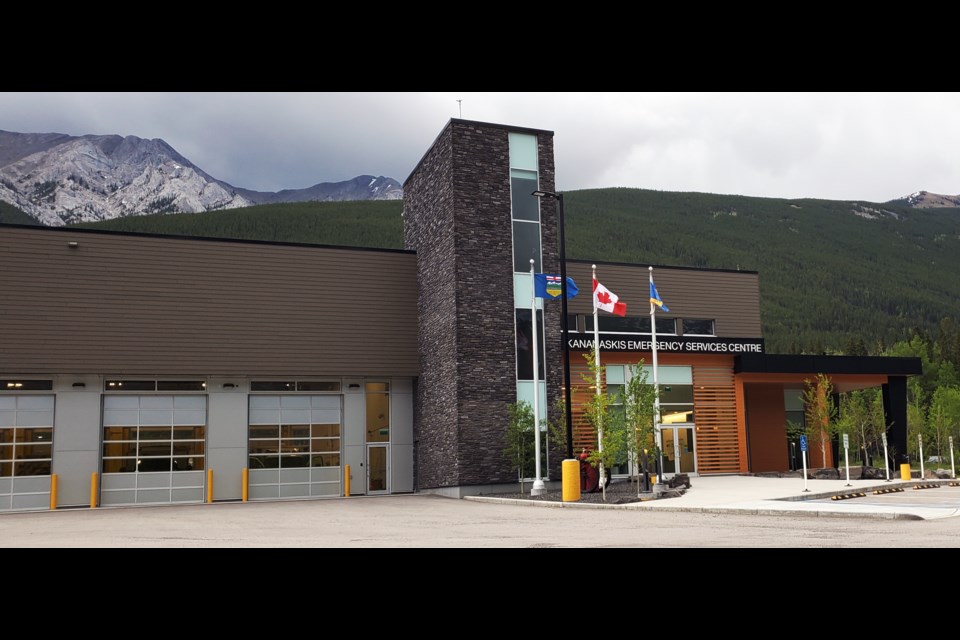KANANASKIS COUNTRY – Half of Kananaskis Improvement District councillors’ terms have come to an end, but quorum remains under the municipality’s procedural order.
The council of six recently became a council of three – the number needed for quorum – with terms of the municipality’s two provincially appointed members ended and one elected councillor having resigned.
Couns. Erum Afsar and Darren Enns, appointed by the Ministry of Forestry and Parks to represent Alberta citizens-at-large, each completed an extended four-year term at the end of October. Coun. Anita Szuster, whose last day on council was Nov. 27, had to make the difficult decision to resign due to ineligibility to continue representing non-commercial residents and ratepayers.
“I had to resign my position because I was no longer employed full-time in the Kananaskis region,” said Szuster, who was elected to the position in a byelection in August 2022 when former councillor Jeff Storck resigned for the same reason.
“It wasn’t really by choice that I resigned because I really liked my position as councillor, but the rule book says that you have to reside in Kananaskis and in order to reside in Kananaskis, you need a certain amount of hours of employment.”
Specifically, KID’s need to reside policy states residents must work at least 30 hours per week within Kananaskis to qualify.
Szuster was formerly working full-time in a management role at a Kananaskis hostel, where she also resided. Finding housing to replace her accommodation was challenging when she left the job, which forced her to move out of the region, she said.
Although her term was short, Szuster said she was proud to represent and be part of decision-making projects for the small community of about 250 residents spread over 400,000 hectares of provincial parks, protected areas and Crown land, in addition to the millions of visitors to Kananaskis each year.
“The learning curve was extremely challenging. And for me, personally, I wish I would have had more time to be able to commit to the learning process. It is such a unique governance model, and I found that was extremely exciting and a privilege to be able part of,” she said.
KID council is comprised of six councillors, led by an elected chair and vice-chair. Four members represent residents and ratepayers and two are provincially appointed as Alberta citizens at-large. The latter seats were held by Afsar and Enns as part of a four-year appointment that began in 2017 and was extended by two years to “allow for stability within council,” according to Christi Retson-Spalding, a spokesperson with the Ministry of Forestry and Parks.
“The minister’s office, in conjunction with the department and the Public Service Commission, is now in the process of selecting and reviewing suitable replacement candidates in the very near future,” she said of the recently vacated positions in an email. “We thank Darren and Erum for their excellent service to the KID council and the people of Alberta and wish them the very best in their future endeavours.”
The Outlook reached out to Afsar and Enns for comment but Afsar declined an interview at this time and a response was not received by Enns in time for publication.
The province, through Alberta Municipal Affairs, or forestry and parks for KID, is responsible for all functions of local government in improvement districts, including the levy and collection of taxes.
Five of Alberta’s eight improvement districts are located in national parks with I.D. No. 4 in Waterton, I.D. No. 9 in Lake Louise, I.D. No. 12 in Jasper, I.D. No. 13 in Elk Island and I.D. No. 24 in Wood Buffalo. Other than KID, of which the land base is owned and administered almost entirely by the province, there is also I.D. No. 25 in Willmore Wilderness and I.D. No. 349, near Cold Lake.
Under this governance model, many of the decisions needed to run KID have been delegated to council by ministerial order. The minister of forestry and parks delegates authority to provincial employees or council for specific purposes. The Municipal Government Act sets out the respective roles and responsibilities of council and administration.
Supporting council are one full-time administrator, two full-time municipal advisors and a Chief Administrative Officer, who is also manager of Kananaskis Emergency Services. All are employed by the province.
While part of council, Szuster served on the Bow Valley Regional Housing board, Afsar co-led a telecommunications committee aimed at improving broadband connectivity in the remote Kananaskis region and Enns, who is also director of planning and environment for the Town of Banff, helped form and lead an ongoing initiative to bring public transit to ease traffic congestion and increase connectivity for residents and visitors to Kananaskis.
Afsar was also formerly chair of KID council and its budget and audit committee.
Remaining on council are chair Melanie Gnyp, representing Lower Kananaskis Lake cabin owners, Coun. Darren Robinson, representing large business with Kananaskis Country Golf Course and Coun. Claude Faerden, who is vice chair of KID council and represents small business with his operation at Barrier Lake, Kananaskis Outfitters.
Faerden said council owes Enns, Afsar and Szuster “a ton of gratitude.”
“We have so much gratitude for their service and the contributions they made to governance, making sure that our house was in order and advocating for bigger projects like transit and telecommunications within the province and the federal government,” he said, adding KID council will continue momentum on those projects.
Faerden added KID council has yet to receive news on when a byelection for the elected position will be held and when provincial appointments will be made.
“We’ll have more details about a byelection in the new year,” he said. “And we’re really not part of the appointment process at all. It all has to do with how quickly the ministry can get that work done.”
The Local Journalism Initiative is funded by the Government of Canada. The position covers Îyârhe (Stoney) Nakoda First Nation and Kananaskis Country.




